Cron Job For Every Hour
Prerequisites for Setting Up a Cron Job for Every Hour
Before you can start setting up a cron job to run every hour, there are a few prerequisites that you need to fulfill. First and foremost, you need to ensure that you have root access or the necessary permission to create cron jobs. Without the necessary privileges, you won’t be able to modify or create cron jobs. Additionally, it is important to familiarize yourself with the command line interface, as setting up a cron job requires executing commands in the terminal.
Understanding the Syntax of a Cron Job
Cron is a time-based job scheduling system in Unix-like operating systems. To set up a cron job, it is important to understand the syntax of cron. The cron syntax consists of five fields: minute, hour, day of the month, month, and day of the week. Each field can contain a specific value or a wildcard character that represents any value. By positioning the required values for running a cron job every hour, you can ensure that the job is executed at the desired frequency.
Creating a New User for the Cron Job
Creating a separate user for cron jobs is a recommended practice for security and organization purposes. By isolating cron jobs within a specific user, you can minimize the risk of interfering with other processes or compromising system security. To create a new user on Linux or macOS, you need to execute specific commands in the terminal. Once the user is created, you also need to assign the necessary permissions to ensure that the user can execute cron jobs.
Editing the Cron Tab File
The cron tab file is where all the cron jobs are stored. It holds the information about each cron job, including the schedule and the command to be executed. To set up a cron job for every hour, you need to edit the cron tab file using a text editor. The location of the cron tab file may vary depending on the operating system and distribution you are using. Once you have located the file, you can open it with a text editor and start adding your cron job entries.
Specifying the Command and Frequency for the Cron Job
After opening the cron tab file, you need to specify the command to be executed and the frequency at which it should run. The command can be any valid command or script that you want to run every hour. To specify the frequency, you can use asterisks (*) as wildcard characters. For a cron job to run every hour, you would use an asterisk in the hour field. Additionally, you can specify other values in the remaining fields to fine-tune the schedule.
Verifying the Execution of the Cron Job
Once you have set up a cron job to run every hour, it is important to verify if it is executing properly. To check the status of the cron job, you can use the command-line tool provided by your operating system. This tool will show you if the cron job is running or if there are any errors. Additionally, you can view the cron job log file to gather more information about its execution. Troubleshooting common issues will be necessary to ensure the cron job is running as expected.
Modifying or Deleting an Existing Cron Job
If you need to make changes to an existing cron job, you can do so by editing the cron tab file. By locating the entry of the desired cron job, you can modify any of its parameters, including the command or the schedule. Similarly, if you want to remove a cron job completely, you can simply delete the corresponding entry from the cron tab file. Keep in mind that any changes made to the cron tab file will require the cron daemon to be reloaded for the changes to take effect.
Advanced Options for Cron Jobs
Setting up a cron job for every hour is just one option for scheduling recurring tasks. There are more advanced options available for cron jobs, depending on your specific needs. For example, you can configure a cron job to run only during specific hours of the day, allowing you to specify a more precise schedule. Alternatively, instead of creating a single job for every hour, you can set up individual jobs for each hour, providing more flexibility. Another option is to integrate cron jobs with email notifications or logging mechanisms, allowing you to monitor the execution and receive notifications when necessary.
FAQs:
Q: How do I set up a cron job for every 2 hours using crontab?
A: To set up a cron job for every 2 hours, you can use the */2 syntax in the hour field of the cron tab file. For example, to run a script every 2 hours, you would use the following entry: 0 */2 * * * /path/to/script.sh
Q: How do I set up a Java cron job to run every hour?
A: To set up a Java cron job to run every hour, you need to specify the command to execute the Java program in the cron tab file. For example: 0 * * * * /usr/bin/java -jar /path/to/your/java/program.jar
Q: How do I set up a Spring cron job to run every hour?
A: To set up a Spring cron job to run every hour, you can use the @Scheduled annotation in your Spring application. For example: @Scheduled(cron = “0 * * * *”) public void yourScheduledMethod() { // Code to be executed every hour }
Q: How do I set up a cron job on Linux to run every hour?
A: To set up a cron job on Linux to run every hour, you need to edit the crontab file. You can do this by executing the command crontab -e in the terminal. Then, add your cron job entry using the desired schedule and command.
Q: How do I set up a Java cron job to run every 5 minutes?
A: To set up a Java cron job to run every 5 minutes, you can use the */5 syntax in the minute field of the cron tab file. For example: */5 * * * * /usr/bin/java -jar /path/to/your/java/program.jar
Q: How do I set up a cron job to run every 30 minutes?
A: To set up a cron job to run every 30 minutes, you can use the */30 syntax in the minute field of the cron tab file. For example: */30 * * * * /path/to/script.sh
Q: How do I set up a cron job to run every 8 hours?
A: To set up a cron job to run every 8 hours, you can use the */8 syntax in the hour field of the cron tab file. For example: 0 */8 * * * /path/to/script.sh
In conclusion, setting up a cron job for every hour can be accomplished by following a few steps. By familiarizing yourself with the syntax of a cron job, creating a new user, and editing the cron tab file, you can specify the command and frequency for the job. Verifying the execution, modifying or deleting existing cron jobs, and exploring advanced options will further enhance your cron job management. With the ability to schedule repetitive tasks, cron jobs provide an efficient and automated way to handle various administrative and repetitive tasks.
How To Schedule A Cron Job To Run A Script On Ubuntu 16.04
What Does 0 1 * * * Mean In Cronjob?
Cron is a time-based job scheduler in Unix-like operating systems. It allows users to automate tasks by scheduling commands or scripts to run periodically at fixed times, dates, or intervals. The cronfile, often referred to as the crontab, is where users define the commands or scripts they want to run and when they should be executed.
One of the most common questions about cronjobs is the meaning of the expression “0 1 * * *”. Let’s break it down and understand its significance.
The structure of a cron expression consists of five time and date fields: minute, hour, day of month, month, and day of week. Each field is represented as a number or a range of numbers, and they are separated by spaces.
In our case, “0 1 * * *” translates to:
– 0: The command will run when the minute is 0. In cron, minutes range from 0 to 59.
– 1: The command will run when the hour is 1. Hours range from 0 to 23 in cron, where 0 represents midnight.
– *: The command will run every day of the month, as it signifies any value.
– *: The command will run any month of the year since it represents all possible values.
– *: The command will run any day of the week, allowing it to be executed on any day.
Altogether, this cron expression specifies that a command should run every day at 1:00 AM.
To further clarify, let’s explore some frequently asked questions concerning this cron expression:
FAQs:
Q: What’s the significance of specifying both * and a range of values within the cron expression?
A: When * is used, it means “any.” In the case of “0 1 * * *,” * is used to indicate any day of the month, any month, and any day of the week. By combining * with specific values, you can create a selective schedule. For example, “0 1 1,15 * *” will run a command at 1:00 AM on the first and fifteenth day of every month.
Q: Does this cron expression consider time zone differences?
A: No, cron does not take time zone differences into account by default. It operates based on the system’s local time. If you need to schedule a command based on a different time zone, you can set the time zone explicitly within your command or script.
Q: Can I use names or abbreviations instead of numbers in the cron expression?
A: No, cron expressions only accept numeric values for each time and date field. However, some cron implementations provide wrappers or alternative methods to facilitate the use of names or abbreviations in cron commands.
Q: How can I test if my cron expression is functioning correctly?
A: To ensure your cron expression works as intended, you can temporarily set the command to run a script that logs or outputs a message indicating its execution. By monitoring the log or output, you can confirm that the cronjob is running as anticipated.
Q: Can I schedule a command to run multiple times within an hour using cron expressions?
A: By default, cron is designed to schedule tasks to run at specific points in time rather than repeatedly within a particular time interval. However, you can use other mechanisms like loops or additional scripts to achieve the desired functionality.
Q: Is there a way to represent specific intervals within the cron expression?
A: Yes, you can use the forward slash (/) character to represent intervals. For example, “0 */2 * * *” will run a command every two hours, starting at midnight (0:00).
Q: Can I specify multiple time ranges in a single cron expression?
A: Yes, you can use commas to specify multiple values within a field. For instance, “0 9-12,18-21 * * *” will execute a command at 9:00 AM, 10:00 AM, 11:00 AM, 12:00 PM, 6:00 PM, 7:00 PM, 8:00 PM, and 9:00 PM.
Understanding cron expressions is key to effectively scheduling tasks and automating operations. The “0 1 * * *” cron expression is a versatile and common choice to perform daily jobs at a specific time. By grasping the structure of cron expressions and exploring various options, users can easily tailor their cronjobs to meet their specific requirements.
What Is Cron Every 30 Minutes Of Hour?
Cron is a time-based job scheduler in Unix-like operating systems that allows users to automate tasks. It is a powerful tool that can execute commands and scripts at fixed times, recurring intervals, or specific patterns. The cron job format consists of two main components: the cron schedule and the command to be executed.
The cron schedule is a string of five (or six) fields representing the time and frequency of the task. These fields define when and how often the cron job should run. The fields, in order, represent the minute, hour, day of the month, month, and day of the week. The sixth field, if present, represents the username under which the command should be executed.
When it comes to running a command every 30 minutes of the hour, the cron schedule should be set accordingly. In this case, the minute field would be “*/30” to indicate that the job should run every 30 minutes. The hour field can be set to an asterisk “*”, meaning it can run at any hour.
To configure a cron job to run every 30 minutes, one option is to edit the user’s crontab file. By using the command “crontab -e” in a terminal, the user can access this file and add their desired cron job. For example, to execute a script called “my_script.sh” every 30 minutes, the following line would be added to the crontab file:
*/30 * * * * /path/to/my_script.sh
This schedule notation means the script will run at every 30th minute of every hour, every day of the month, every month, and every day of the week.
It is important to remember that cron jobs run with the environment variables of the user who initiated them, so it is crucial to provide the full path to the script or command being executed. This ensures that cron can locate the necessary resources to run the task successfully.
Furthermore, it is recommended to redirect the output of the cron job to a log file. This can be done by appending “>> /path/to/logfile.log 2>&1” to the command. Redirecting the output allows users to review any error messages or troubleshoot issues if necessary.
FAQs:
1. How does cron job scheduling work?
Cron schedules jobs based on the time and frequency specified in the cron schedule. It checks the system’s crontab files (usually located in /var/spool/cron/crontabs) at regular intervals. If it finds a pending job that matches the current time, it executes the associated command or script.
2. Can I schedule a cron job to run every X minutes?
Yes, you can schedule a cron job to run at specific intervals, including every X minutes. By using “*/X” in the minute field of the cron schedule, the job will run at every Xth minute. For example, “*/10 * * * *” runs a job every 10 minutes.
3. Can I run a cron job every half hour?
Yes, you can run a cron job every half hour by setting the minute field to “*/30”. This notation triggers the job at every 30th minute of every hour.
4. What if a cron job takes longer than the specified interval?
If a cron job takes longer than the specified interval, subsequent jobs may not start on time. Cron doesn’t attempt to run missed jobs retroactively. It is advisable to ensure that the tasks executed by cron jobs are optimized and complete within the allocated time.
5. How can I edit or remove a cron job?
To edit or remove a cron job, access the crontab file using “crontab -e” and modify or delete the corresponding job entry. Save the changes, and the cron scheduler will update accordingly.
In conclusion, cron is a powerful tool for automating tasks on Unix-like operating systems. By understanding how to configure the cron schedule and the appropriate notation to execute a command every 30 minutes, users can automate repetitive tasks and improve efficiency. Remember to redirect the output to a log file for better troubleshooting and to provide the full path to the command or script being executed. Cron simplifies routine operations and allows users to focus on higher-level activities while their tasks are executed seamlessly in the background.
Keywords searched by users: cron job for every hour Crontab every 2 hour, Java cron job every hour, Spring cron every hour, Crontab every hour linux, Java cron job every 5 minutes, Crontab every 5 minutes, Crontab every 30 minutes, Crontab every 8 hours
Categories: Top 49 Cron Job For Every Hour
See more here: nhanvietluanvan.com
Crontab Every 2 Hour
When it comes to automating tasks on a computer, the crontab utility is an essential tool for many users. Crontab allows you to schedule and run scripts or commands at specified intervals. One commonly used feature of crontab is the ability to run tasks every 2 hours. In this article, we will dive into the details of crontab, its syntax for running tasks every 2 hours, and how you can harness its power to automate your workflow effectively.
Understanding Crontab and Its Purpose:
Crontab is a time-based job scheduler in Unix-like operating systems. It enables users to schedule commands or scripts to run automatically at specific intervals, such as daily, weekly, or even every hour. Its name, crontab, is derived from the words “cron” (the system daemon that runs scheduled tasks) and “tab” (short for table, which represents a set of commands).
Crontab operates on a system-wide and user-specific basis. The system-wide crontab is available for root users, while each regular user has their own individual crontab. By utilizing crontab, you can automate repetitive tasks and free up your time for more important matters.
Running Tasks Every 2 Hours with Crontab:
To run tasks every 2 hours using crontab, we need to specify the interval in the crontab file. The crontab file is essentially a plain text file that contains a list of commands and the time intervals at which they should be executed. The syntax for scheduling tasks in crontab follows a specific pattern.
To open the crontab file, we will use the command:
“`
crontab -e
“`
This command will open the crontab file in your default text editor. Now, let’s look at the syntax for scheduling tasks to run every 2 hours:
“`
0 */2 * * * command
“`
In the above expression, the first field, “0”, represents the minute when the command will run. In this case, we specify “0” to signify the beginning of the hour.
The second field, “*/2”, represents the hour at which the command will execute. Using “*/2” allows us to specify every 2 hours. If we had used a specific number, such as “2”, it would have run only at that specific hour.
The remaining fields, represented by “*”, denote the day of the month, month, and day of the week. By placing an “*” in each field, we instruct crontab to run the command every day of the month and every day of the week.
Finally, “command” represents the actual command or script you want to execute.
For example, let’s say we want to run a backup script every 2 hours. We would add the following line to our crontab file:
“`
0 */2 * * * /path/to/backup_script.sh
“`
In this case, the backup_script.sh would be executed every 2 hours, starting at the beginning of each hour.
FAQs about Crontab Every 2 Hour:
1. Can I schedule tasks to run every 2 hours during specific hours of the day?
Yes, you can. By defining the hour field more specifically, such as “2-8/2” (which means every 2 hours from 2 AM to 8 AM), you can limit the task execution to a particular period of the day. Supplementing the initial expression, the task scheduling line would then look like:
“`
0 2-8/2 * * * command
“`
2. What if I want to run a task every 2 hours starting from a specific hour?
Let’s say you want to start the task at 10 AM and then execute it every 2 hours thereafter. You would simply change the hour field to “10-18/2” to achieve this:
“`
0 10-18/2 * * * command
“`
3. How can I view or remove my existing crontab entries?
To view your current crontab entries, you can use the command “crontab -l”. If you wish to remove all the entries, you can execute “crontab -r”. Additionally, you can use “crontab -e” to edit your crontab file.
Conclusion:
Crontab is a powerful tool that allows users to automate tasks on their systems. With its syntax for running tasks every 2 hours, you can efficiently schedule repetitive tasks, such as backups or system maintenance, without manual intervention. Understanding and utilizing crontab effectively can significantly improve your productivity and help streamline your daily workflow.
Java Cron Job Every Hour
In the world of software development, time is a precious resource. Whether you are building complex systems or maintaining existing ones, performing repetitive tasks manually can be time-consuming and prone to errors. This is where cron jobs come in handy. Cron jobs are automatic processes that are scheduled to run at specific intervals, ensuring that your tasks are executed reliably and efficiently. In the Java programming language, you can implement cron jobs using libraries such as Quartz, which provide a powerful and flexible way to automate your tasks. In this article, we will delve into the world of Java cron jobs, particularly focusing on jobs that are scheduled to run every hour.
What are Cron Jobs?
Cron is a time-based job scheduler in Unix-like operating systems. It allows users to schedule jobs (commands or scripts) to run periodically at fixed times, dates, or intervals. Cron employs a simple and intuitive syntax to define the timing and frequency of jobs. Each user on a system has a personal crontab file, which contains the list of jobs to be executed. Cron also includes a system-wide crontab file that runs commands for the system administrator.
In the context of Java, cron jobs refer to Java programs or scripts that are executed at predetermined times using cron-like scheduling patterns. Java offers libraries, such as Quartz, which simplify the implementation of time-based job scheduling. These libraries enable developers to create jobs, define their schedule, and control their execution programmatically.
Creating a Java Cron Job
To create a Java cron job that runs every hour, you first need to establish a Java project with the necessary dependencies. In a Maven project, you can include the Quartz dependency in your pom.xml file as follows:
“`
“`
Once your project is set up, you can create a Java class that represents your cron job. This class should implement the `Job` interface provided by Quartz. The `Job` interface contains a single method, `execute()`, which is invoked by Quartz whenever the job is triggered. Within this method, you can define the actions that need to be performed by your job. For instance, if you want your cron job to send an email every hour, you can include the email-sending code within the `execute()` method.
Now, let’s define the schedule for our job. Quartz uses a cron-like syntax to express the timing and frequency of job executions. To schedule a job to run every hour, you can use the following cron expression: `0 0 * * * ?`. This expression instructs Quartz to trigger the job at the top of every hour, regardless of the day, month, or year. You can customize this expression based on your specific requirements.
To schedule your job, you need to create a `Trigger` object. Quartz provides various types of triggers, but for hourly jobs, the most suitable choice is the `CronTrigger`. You can create a `CronTrigger` instance using the cron expression and associate it with your job. Additionally, you should create a `Scheduler` object and configure it with the necessary properties, such as the thread pool size and job store location. Finally, you can start the scheduler and watch your cron job run automatically every hour.
Frequently Asked Questions:
Q: Can I schedule multiple cron jobs to run every hour?
A: Yes, you can schedule multiple jobs by creating multiple instances of `Job` and `CronTrigger` classes. Each job will have its separate cron expression and actions.
Q: Can I specify the duration or interval for cron jobs to run within an hour?
A: The basic cron syntax does not allow specifying intervals within an hour, but you can achieve this by using multiple cron expressions and triggers. For example, if you want a job to run every 10 minutes within an hour, you can define six cron expressions with minute values 0, 10, 20, 30, 40, and 50, and associate them with a corresponding set of triggers.
Q: Can I pass parameters or arguments to my cron job?
A: Yes, you can pass parameters to your job by using the `JobDataMap` provided by Quartz. It allows you to store key-value pairs that can be accessed within the `execute()` method of your job.
Q: How can I ensure my cron jobs are executed reliably, even in case of system failures?
A: Quartz provides mechanisms to handle job failures and system crashes gracefully. By configuring job stores and setting up durable job triggers, you can ensure that your cron jobs pick up where they left off after a system restart or failure.
Q: Are there any limitations to running cron jobs in Java?
A: The execution of cron jobs in Java is limited to running within the Java Virtual Machine (JVM). If a job requires interacting with external systems or running commands in the operating system, you may need additional configuration or tools to accomplish those tasks.
In conclusion, Java cron jobs offer a powerful and reliable way to automate recurring tasks in your applications. By leveraging libraries like Quartz, you can schedule and execute jobs with ease, ensuring productivity gains and improved efficiency. Whether you need to generate reports, send notifications, or perform any other periodic task, Java cron jobs provide the automation you need. So, go ahead, implement your Java cron job to run every hour, and watch your tasks accomplish themselves while you focus on more important aspects of your software development journey.
Spring Cron Every Hour
Understanding Spring cron
Cron is a time-based job scheduler widely used in Unix-like operating systems. It allows users to schedule and automate repetitive tasks, such as updating database records, generating reports, or sending notifications. Spring cron builds upon this concept and provides an elegant way to schedule tasks within the Spring ecosystem.
Syntax and Configuration
The Spring cron syntax is based on the typical cron expression format. It consists of six fields specifying different aspects of the time configuration. These fields represent the second, minute, hour, day of the month, month, and day of the week, respectively.
The cron expression follows the pattern: “second minute hour day_of_month month day_of_week”. Using wildcard symbols, such as “*” or “?”, allows specifying any value for a field.
For example, the cron expression “0 * * * * ?” would trigger a task every minute, at the start of each hour, without constraints on the other fields.
Configuring Spring cron
To schedule a task in Spring using cron, we need to annotate a method with the `@Scheduled` annotation and provide the cron expression as its attribute. Additionally, we need to enable scheduling in the Spring configuration.
“`java
@EnableScheduling
@Configuration
public class MyConfig {
@Scheduled(cron = “0 * * * * ?”)
public void myTask() {
// Task logic
}
}
“`
In this example, the `myTask()` method will be executed every minute, as specified by the cron expression “0 * * * * ?”.
Advantages of Spring cron
1. Flexibility: With Spring cron, developers have fine-grained control over task scheduling. It allows them to specify complex time patterns and recurring intervals according to their requirements.
2. Integration: Spring cron seamlessly integrates with other Spring features and functionalities. It can be combined with dependency injection, transaction management, and event-driven programming, enhancing the overall developer experience.
3. Scalability: Spring cron is designed to handle large-scale applications. It supports concurrent execution of scheduled tasks, ensuring efficient utilization of system resources and reducing latency.
4. Reliability: Spring cron provides built-in error handling and recovery mechanisms. In case of failures or exceptions, it ensures that the application remains stable by managing task execution and maintaining accurate scheduling.
5. Monitoring and Management: Spring cron offers extensive monitoring and management capabilities. It allows developers to track the execution history, manage task lifecycles, and configure alerts or notifications for critical tasks.
Common Use Cases
Spring cron finds its application in various scenarios, some of which include:
1. Periodic Data Refresh: Tasks that require regular data updates or synchronization with external systems can be easily scheduled using Spring cron.
2. System Maintenance: Tasks like database cleanup, log rotation, or cache eviction can be automated at specific intervals, reducing manual intervention and ensuring system stability.
3. Reporting and Analytics: Spring cron enables the generation and delivery of routine reports or analytics, providing timely insights to stakeholders.
4. Notifications and Reminders: Applications often need to send reminders or notifications to users. Spring cron makes it convenient to send automated reminders or notifications at predefined times.
5. Batch Processing: Spring cron can be integrated into batch processing workflows, initiating data processing or transformation jobs at regular intervals.
FAQs
Q: Can I schedule a task to run only on specific days of the week?
A: Yes, you can specify the day of the week field to schedule a task for a particular day or a combination of days using the cron expression.
Q: How can I ensure that only one instance of a task runs at a time?
A: By default, Spring cron allows concurrent execution of tasks. To enforce single-threaded execution, you can use the `@DisallowConcurrentExecution` annotation from the Quartz library.
Q: Can I pass parameters to a scheduled method in Spring cron?
A: Yes, you can pass parameters to a scheduled method in Spring cron by defining them as method parameters. However, take note that the parameters must be serializable.
Q: How can I schedule a task to run at a fixed rate instead of a cron-like schedule?
A: Spring cron also provides the `fixedRate` attribute in the `@Scheduled` annotation. By setting this attribute, the task will be executed at a fixed rate, regardless of the cron expression.
Q: Can I schedule multiple tasks using Spring cron?
A: Yes, you can schedule multiple tasks by annotating multiple methods with the `@Scheduled` annotation. Each task can have its own unique cron expression.
In conclusion, Spring cron is a powerful feature of the Spring Framework that simplifies the scheduling and automation of tasks. With its flexible syntax, seamless integration, and extensive monitoring capabilities, Spring cron empowers developers to have fine-grained control over task execution, contributing to the efficiency and reliability of their applications.
Images related to the topic cron job for every hour

Found 34 images related to cron job for every hour theme

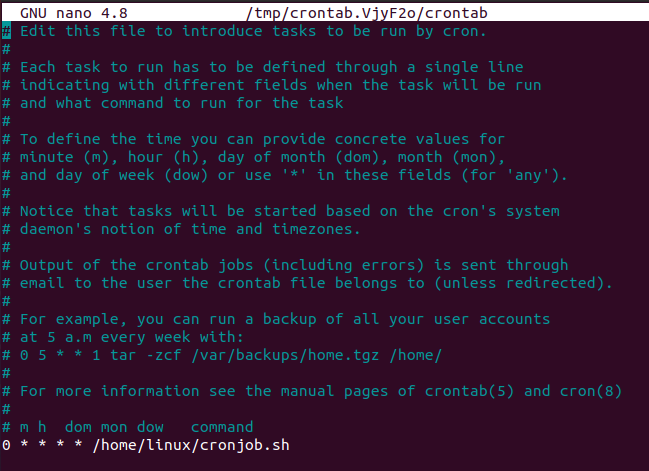


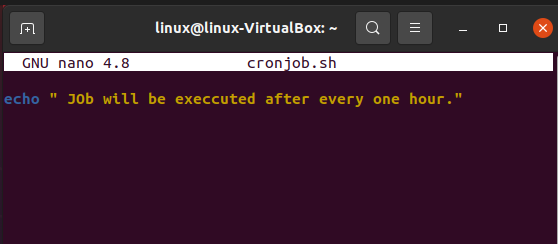

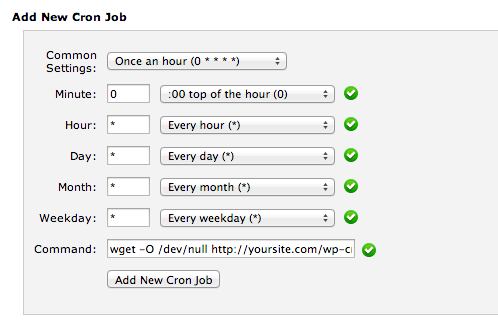
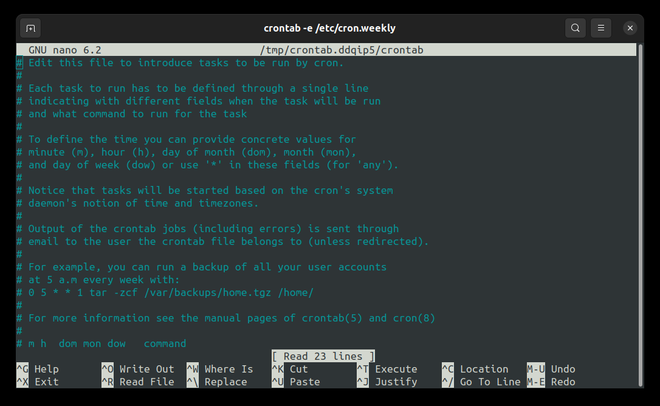
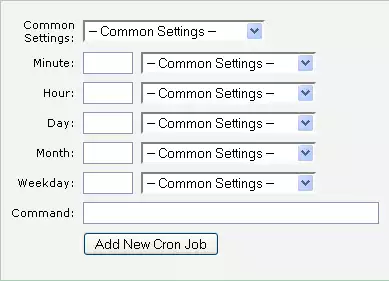
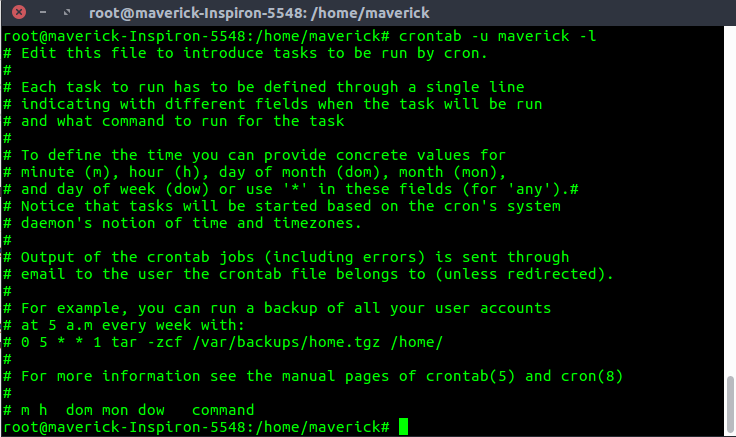










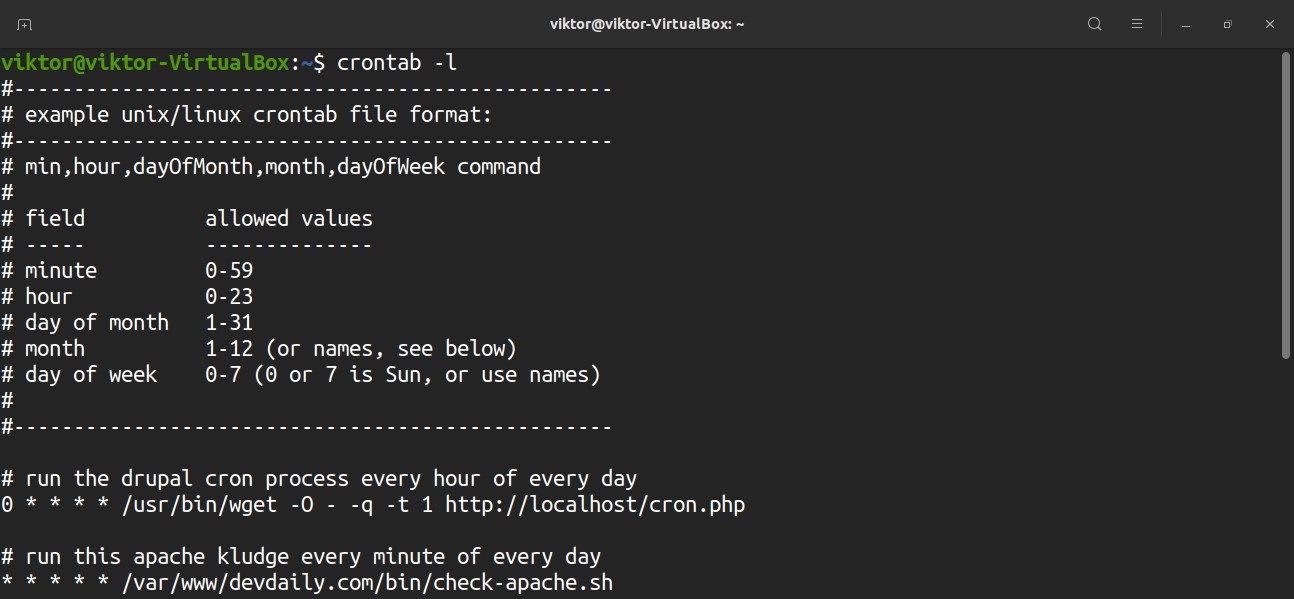




![Cron Jobs Every So Many Hours [Crontab Cheat Sheet] Cron Jobs Every So Many Hours [Crontab Cheat Sheet]](https://cd.linuxscrew.com/wp-content/uploads/2022/09/cron-jobs-hours-cheat-sheet.png)


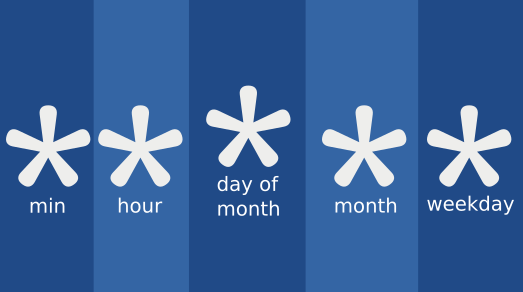




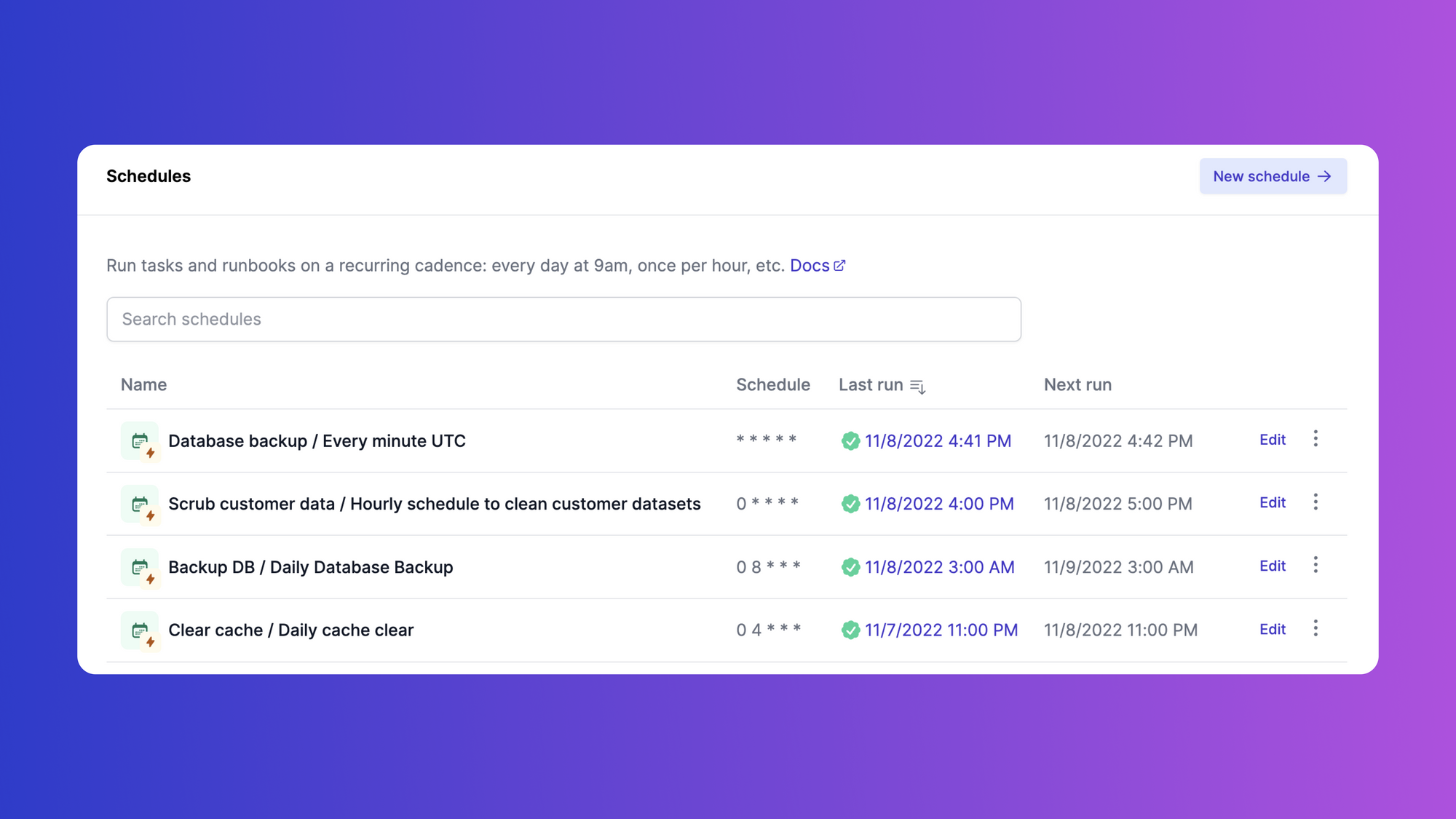




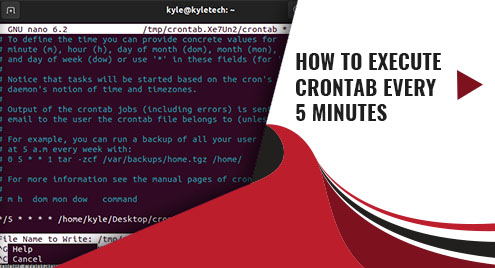





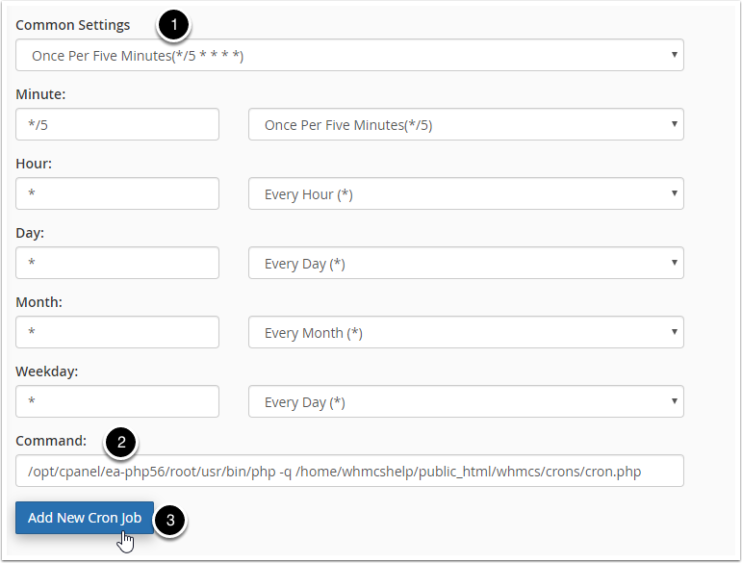



Article link: cron job for every hour.
Learn more about the topic cron job for every hour.
- Cron job every 1 hour – Crontab.guru
- How to run cron every hour – with variations and examples
- How to run a cron job for every hour? – CyberPanel
- What does schedule of “0/1 * * * *” mean in kubernetes cron job
- Cron job every hour at 30 minutes – Crontab.guru
- cron – ArchWiki
- Configure cron job schedules – Google Cloud
- Cron job every hour – Cron Expression To Go
- Running cron job/task at every hour [duplicate] – Stack Overflow
- How to Schedule a Crontab Job for Every Hour – Linux Hint
- Run cron job every hour – Cron Helper
- How to Schedule a Crontab Job for Every Hour?
- Schedule Cron Job Every 1 hour in Linux – Fedingo
- Task Scheduling – The PHP Framework For Web Artisans